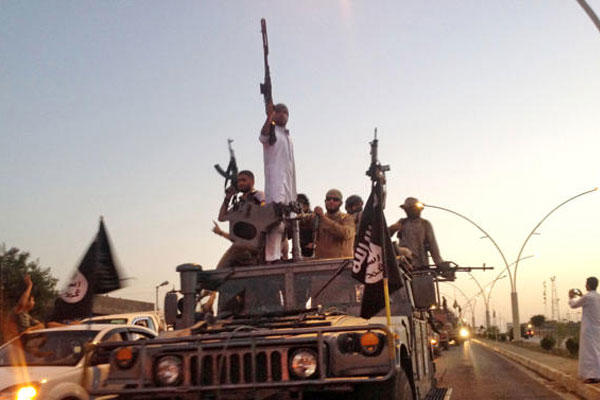The ISIS fleet of captured U.S. military vehicles, including M1A1 tanks, grew by more than 100 when Iraqi Security Forces (ISF) fled the provincial capital of Ramadi 60 miles west of Baghdad and abandoned their equipment , Pentagon officials said Tuesday.
In addition, "there were some artillery pieces left behind," said Army Col. Steve Warren, a Pentagon spokesman, but he could not say how many.
About 100 wheeled vehicles and "in the neighborhood of dozens of tracked vehicles" were lost to ISIS when the last remaining Iraqi defenders abandoned the city of about 500,000, Warren said.
The tracked vehicles were mostly armored personnel carriers but "maybe half a dozen tanks" were in the mix, Warren said. He did not say what type of tanks they were. Photos posted by ISIS on social media purported to show about 10 M1A1 Abrams tanks in their possession and large amounts of captured ammunition.
In Ramadi, ISIS displayed some of their captured vehicles in a victory parade of Toyota land cruisers as black-clad fighters brandished weapons and the black flag of ISIS through the streets of the shattered city. Videos posted by ISIS on social media showed children in Ramadi celebrating with the militants.
ISIS fighters reportedly were on the move again to the east of Ramadi toward the Iraqi army and air base at Habbaniya, where Shiite militias who had been ordered to stay out of the fight in Ramadi, were gathering for a possible counter-attack.
Warren said "this is an Iraqi decision on when to conduct a counter-attack." The U.S. has said it would use airstrikes to back Shiite militias acting at the direction of the central government in Baghdad but would withhold support from militias aligned with Iran. "It will be a difficult fight" to retake Ramadi, Warren said.
U.S. Central Command estimated that "several thousand" ISF defenders were in Ramadi over the weekend and were facing ISIS fighters also numbering in the thousands. The ISIS fighters kept attacking despite a sandstorm that limited U.S. air support, Warren said.
The sandstorm hindered the defense but Warren wouldn't say it was the main reason for the defeat. "No, it was a factor," Warren said. There were other factors - "leadership being one of them, tactics being one of them," Warren said.
The fall of Ramadi prompted Sen. Lindsey Graham, R-S.C., to argue that the U.S. should boost the U.S. training and advisory contingent in Iraq - now numbering about 3,000 - to 10.000.
"I think 10,000 troops would allow us to train the Iraqi army at a faster pace, give them capability that they don't have," Graham said.
However, Warren didn't give any indication the number of U.S. trainers in Iraq would go up soon.
"Currently, we're going to stick with the strategy we have" to keep U.S. ground troops off the battlefield and rely on Iraqi forces backed by coalition airstrikes.
Richard Sisk can be reached at Richard.Sisk@military.com





























